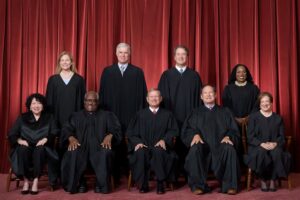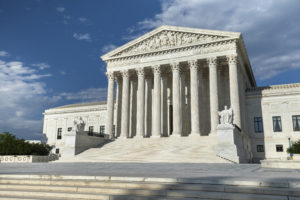Bloomberg Law: The Supreme Court May Have Gutted Chevron in Sackett

After a decade-and-half battle with the Environmental Protection Agency, Michael and Chantell Sackett were finally vindicated by the US Supreme Court. Yet one significant part of the Sackett v. EPA opinion has gone largely overlooked.
Ruling for the Sacketts, the court seems to have applied a clear statement rule when a statute has both civil and criminal applications. This would effectively carve out any statute that carries a criminal penalty on top of a civil penalty from Chevron v. Natural Resources Defense Council, Inc. deference.
Under the Chevron doctrine, courts defer to a federal agency’s interpretation when the law is silent or ambiguous and the agency’s interpretation is “reasonable.” But since the court created the doctrine in the 1980s, it has come under increasing fire.
The court has carved out exceptions to the doctrine, several justices have called the doctrine’s constitutionality into question, and the court hasn’t not applied the doctrine to a case in several years.
The court has also now taken a case to determine whether Chevron should be overruled or limited. But Chevron is still the law—at least for now. And if the court retains Chevron or merely limits its scope, then it must ensure lower courts don’t ignore people’s constitutional rights when applying the doctrine.
It’s a fundamental rule of law that criminal statutes are for courts to interpret, not the executive branch. This principle is largely enforced through the rule of lenity, which requires that ambiguous criminal statutes be interpreted to favor the accused.
The rule upholds the separation of powers by ensuring that courts don’t defer to a prosecutor’s view of the statute they will then enforce—thus preventing the executive from becoming both a lawmaker and law enforcer.
The rule also enforces the fundamental due process requirement that individuals have “fair notice” of what conduct is illegal. If a prosecutor can use a vague statute to haul someone into court, then people will not know how to conform their conduct to the law. But what about statutes that have both criminal and civil applications?
The Clean Water Act—like many federal statutes and almost all federal laws regulating the environment—isn’t a strictly criminal statute. It’s a “hybrid statute” allowing the federal government to seek both civil and criminal penalties for statutory violations.
Whether Chevron should apply to these hybrid laws has been hotly contested. Courts, as a rule, don’t interpret statutory provisions differently depending on the setting. Whatever the courts determine to be the meaning of a statute in a criminal case must be the same in a civil case.
In the context of hybrid statutes, this creates a perverse situation that raises both separation-of-powers and due process problems for the regulated public.
An agency could be tempted to issue a rule interpreting a statutory provision in the civil context, receive Chevron deference for its view of the statute in court, and then that interpretation becomes binding judicial precedent when the federal government seeks to criminally prosecute an individual under the statute.
Then federal agencies, and not Congress, become the final arbiters of what the federal criminal law means running afoul of basic separation-of-powers principles. One might think that once a precedent is set in the civil context, the due process problem would go away. The public will have fair notice of what the law means and can adjust their behavior accordingly to not risk civil or criminal sanctions.
But administrative agencies—especially in the environmental context—aren’t exactly known for bright-line rules. Often, they construe statutory provisions to give themselves broad discretion. And courts typically bless those interpretations by applying deference.
The CWA is a perfect example. In defining what the term “waters of the United States” encompassed, the EPA sought deference to implement the vague “significant nexus test.” That test, however, was hopelessly indeterminate and gave no one “fair notice” to help them navigate what is legal and illegal under the statute.
Yet that test, developed in the civil context, was used to prosecute individuals for violating the CWA. In Sackett, however, a majority rejected the EPA’s pleas for deference to retain the “significant nexus test,” holding that under well-established canons of statutory construction, the EPA must provide “clear evidence that it is authorized to regulate in the manner it proposes.”
The court found “the EPA’s interpretation gives rise to serious vagueness concerns in light of the CWA’s criminal penalties.”
The court further explained, “Due process requires Congress to define penal statutes with sufficient definiteness that ordinary people can understand what conduct is prohibited and in a manner that does not encourage arbitrary and discriminatory enforcement.”
In ruling that EPA must point to “clear evidence” for its authority, the court seemingly put a major limiting principle on the administrative state. Courts should require a clear statement from Congress—and therefore not defer to the executive branch’s interpretation of a statute in the civil context—when that interpretation can be used to criminally prosecute individuals.
The Supreme Court may well overrule Chevron next term—it should for a host of reasons—making this principle largely moot. But to the extent that Chevron survives in any form, it may be severely hobbled if the administrative state must show “clear evidence” for its regulatory authority under any statute that has both criminal and civil applications. As it should be.
This op-ed was originally published at Bloomberg Law on June 28, 2023.








